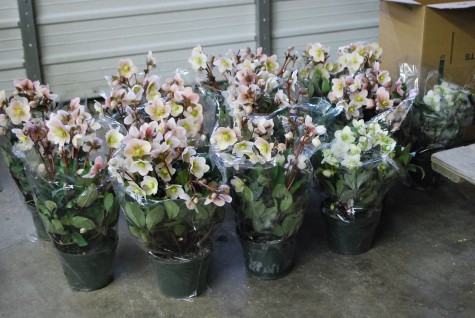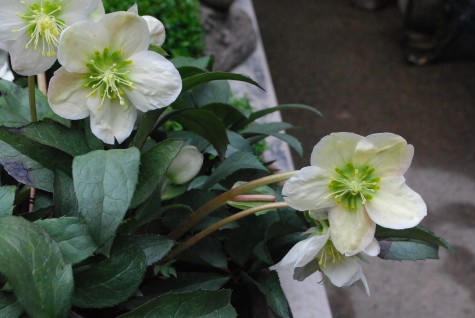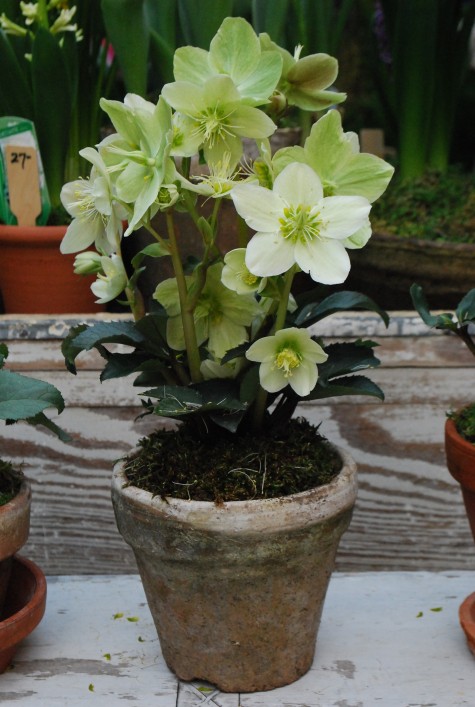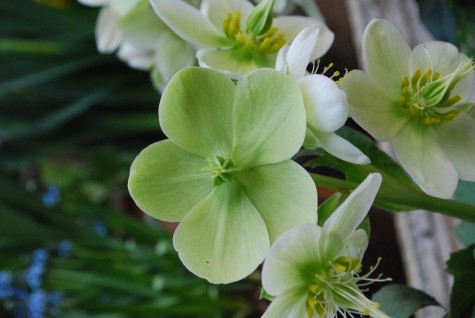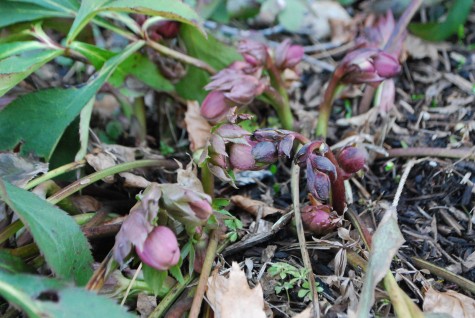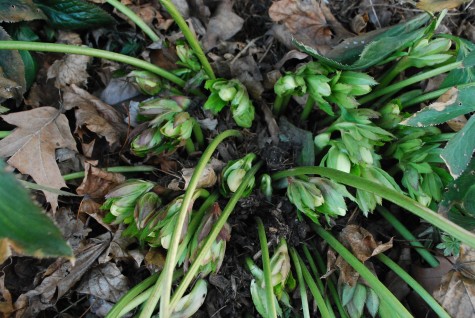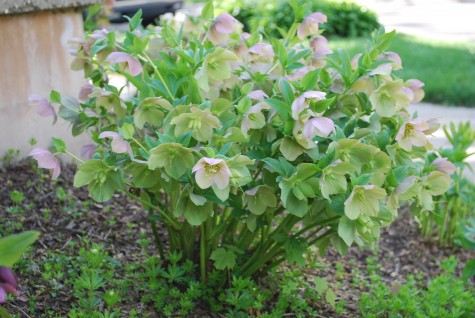Rob bought a slew of greenhouse grown hellebores in 8″ pots for our opening last weekend. They were absolutely stunning. Beautifully grown plants were loaded with flowers and buds coming on-much like the plants in my garden in mid April. Hellebores are one of my most favorite perennials, for reasons not limited to their breathtaking flowers. This variety-helleborus orientalis “Spring Promise”.
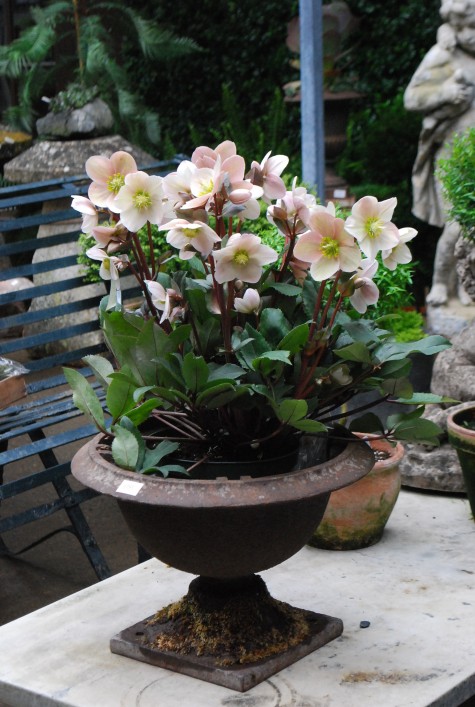
Helleborus orientalis blooms very early in our season with flowers much like a single rose- thus the common name Lenten Rose. Native to many parts of Europe, the largest collection of species are native to the Balkans. This means they are quite cold and frost tolerant. The thick leathery foliage is semi-evergreen in my zone. This means the leaves look great all season long, and on into late winter. Only the foliage of peonies compares in substance and color. A mass of hellebores makes a very good looking groundcover. 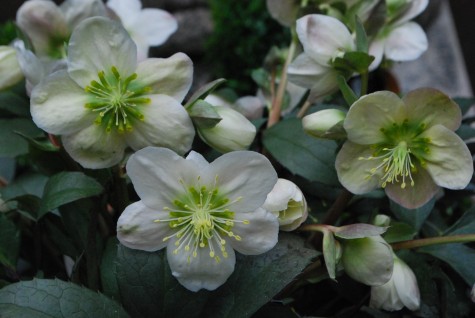
They thrive in moisture retentive soil rich in organic matter. They are remarkably tolerant of shade, although my collection is in full sun, on the north side of some densely growing Picea Mucrunulatum. The flowers are relatively large for a plant growing under 18 inches tall; plants which are properly situated will bloom heavily.
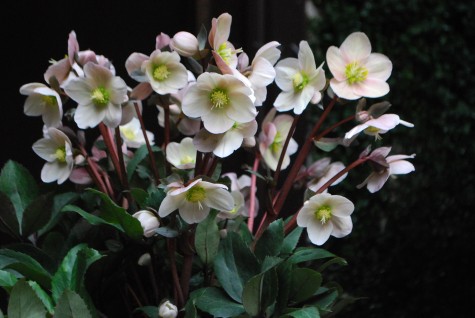
However, hellebores do not increase in size very rapidly. My group took almost 5 years to make a decently fabulous spring display. This also means large plants, if you can find them, can be very pricey. The plants that Rob sourced are the largest I have ever seen for sale, and this particular cultivar is quite beautiful. Blush white flowers surround electric lime green nectaries-gorgeous. The red stems, and dark green leaves are handsome.
Hellebore flowers are comprised of 5 petals, which are actually sepals, surrounded by a ring of cup shaped nectaries. The flower on the right still has its nectaries intact. These sepals will remain on a plant for months after the bloom period. They appear as though they are still in bloom long after the bloom period is over. Some speculate that these persistent sepals aid in the production and viability of the seed.
We did buy some smaller plants, which we promptly potted up into small clay pots. Hellebores grown in a greenhouse can be forced to bloom ahead of their normal bloom period. They are a refreshing and sophisticated change from forced hyacinths and tulips. Once the flowers fade, they can be planted out in the garden. This variety of hellebore is called “Cinnamon Snow”.
This bloom has matured, and dropped all of its stamens and nectaries. It is clear their is a seed developing in the center of the protective ring of sepals. Hellebores will seed prolifically, if they are happy. I clean up my hellebores very gingerly in the spring-I do not want to disturb any seedlings that might be germinating. I plan to cut back the tattered foliage from last year tomorrow, as I am sure the flowers are already emerging from the ground.
On closer inspection, I can see signs of life. I can tell from the dark color of the buds that this hellebore will have dark flowers. The stems of last years leaves are laying on the ground now-it is time to snip them off. It is a beautiful moment when the flowers are in bloom, before the new year’s leaves have begun to emerge.
Another hellebore with closer proximity to my spruce is showing the effects of that protective location. The buds are much further along than those in more exposed locations.
This hellebore is white blooming. I will confess that I like the green and white blooming hybrids the best, but each and every one of them is lovely.
It will not be long before my garden has this spring look. But for now, I have a few plants of Helleborus “Spring Promise” to tide me over.
